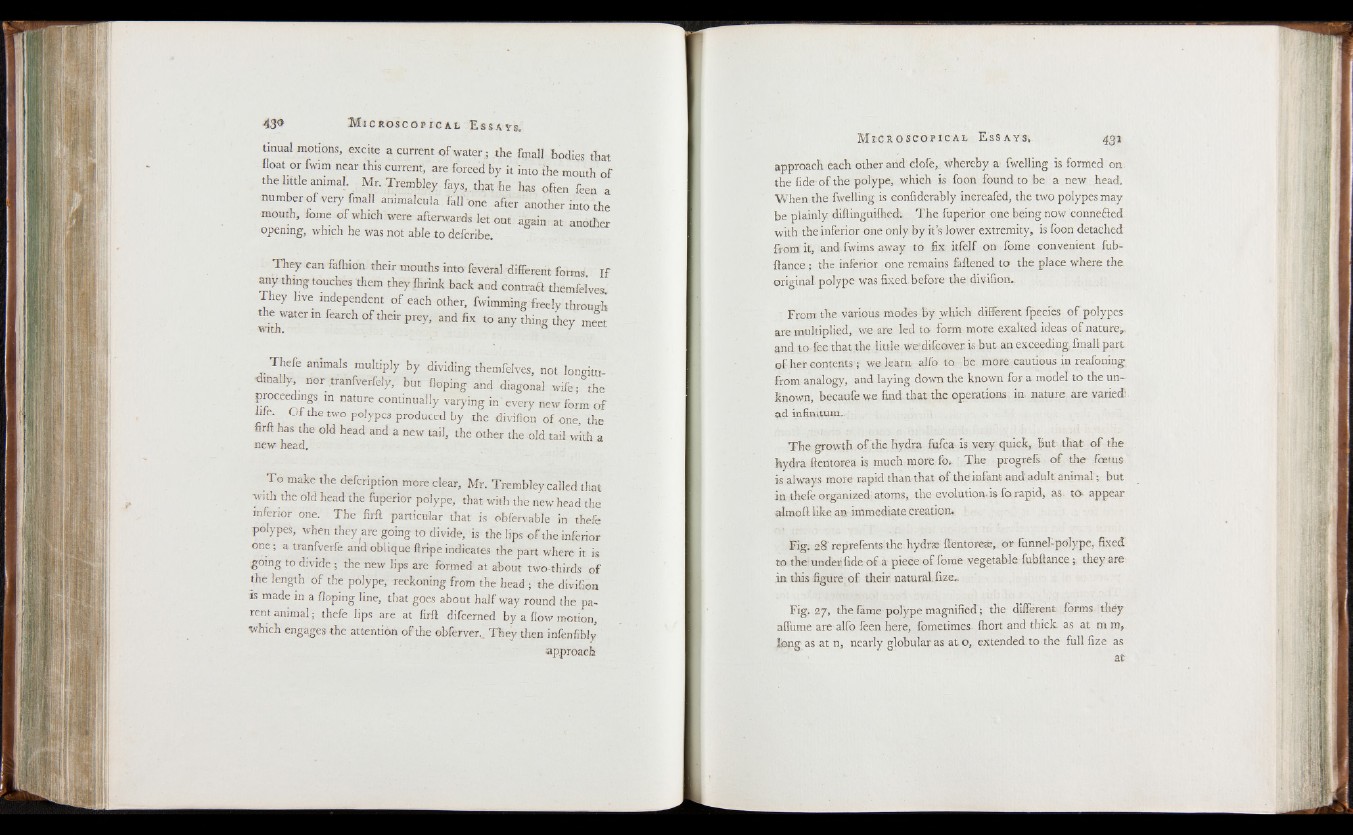
tinual motions, excite a current o f water; the fmall bodies that
float or fwim near this current, are forced by it into the mouth of
the little animal. Mr. Trembky fays, , that he has often feen a
number o f very fmall animalcula fall one after another into the
mouth, fome o f which were afterwards let out again at another
opening, which he was not able to defcribe.
They can falhion their mouths into feveral different forms I f
any thing touches them they ihrink back and contraft themfelves.
They live independent o f each other, fwimming freely through
thewater in fearch o f their prey, and fix to any thing they meet
TTiefe animals multiply by dividing themfelves, not longitu-
ma y, nor tranfverfely, but Hoping and diagonal wife; the
proceedings m nature continually varying in every new form o f
We. Of the two polypes produced by the divifion of one, the
firfl has the old head and a new tail, the other the old tail with a
new head.
T o make the defcription more clear, Mr. Trembley called that
with the old head the fuperior polype, that with the new head the
inferior one. The firfl particular that is obfervable in thefe
polypes, when they are going to divide, is the lips o f the inferior
one; a tranfverfe and oblique flripe indicates the part where it is
going to divide ; the new lips are formed at about two-thirds of
the length of the polype, reckoning from the head ; the divifion
is made in a Hoping line, that goes about halfway round the parent
animal; thefe lips are at firft difcerned by a flow motion,
which engages the attention of the obferver.. They then infenfrbly
approach
approach each other and dole, whereby a fwelling is formed on
the fide- of the polype, which is foon found to be a new head.
When the fwelling is confiderably inereafed, the two polypes may
be plainly diftinguifhed. The fuperior one being now connected
with the inferior one only by it’s lower extremity, is foon detached
from it, and fwims away to fix itfelf on fome convenient fub-
ftance ; the inferior one remains faftened to the place where the
original polype was fixed, before the divifion..
From the various modes by which different fpecies o f polypes
are multiplied, we are led to form more exalted ideas o f nature,,
and to fee that the little we difcover is but an exceeding, fmall part
o f her contents ; we learn alfo to be more cautious in reafoning
from analogy, and laying down the known for a model to the unknown,
becaufe we find that the operations in nature are varied;
ad infinitum..
The growth o f the hydra fufca is very quick, but that o f the
hydra ftentorea is much more fo, The progrefs o f the foetus
is always more rapid than that o f the infant and adult animal; but
in thefe organized atoms, the evolution, is fo rapid, as to- appear
almoft like an immediate creation*
Fig. 28'reprefents the hydra: ftentoreae, or funnel-polype, fixed
to the under fide of a piece of fome vegetable fubflance ; they are
in this figure o f their natural fize-
Fig, 27, the fame polype magnified; the different forms they
afliime are alfo feen here, fometimes fhort and thick as at m m,
long as at n, nearly globular as at o, extended: to the full fize as
at